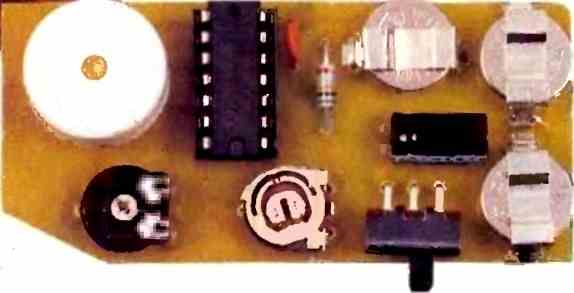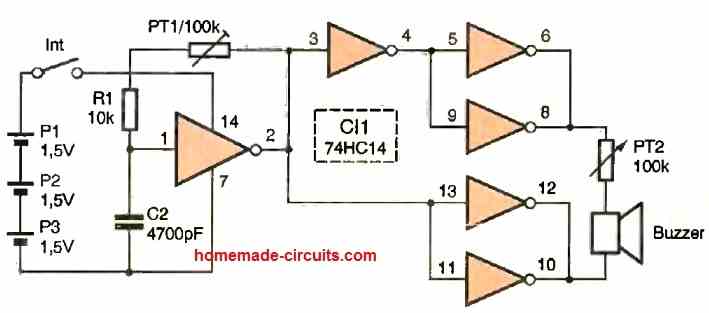In this post we are going to chat about how we can put together a really effective electronic circuit that work as high-frequency mosquito repellents. These circuits are designed specifically to send those pesky mosquitoes packing with their specially tuned high-frequency pulses.
Using A Single CMOS IC
We all know how annoying mosquitoes can be during those hot summer nights especially when it is humid outside. But dont worry, electronic mosquito repellent techniques can totally help us out and hopefully make our sleep a bit more peaceful.

Mosquitoes and Frequencies
So mosquitoes really do not like certain frequencies. We have come up with a sound generator that might not be the most original idea but is super simple and won’t break the bank.
These specific frequencies will create a lot of disturbance for those little bugs helping to drive them away.
This handy gadget runs on three 1.5V button batteries making it small enough to fit right in your pocket!
Circuit Working
In our electronic mosquito repellent circuit we are using a CMOS integrated circuit as an oscillator. This choice is great because it uses very little power which is perfect for something portable like this.

The output from the oscillator goes to two parallel triggers which doubles the current capacity. Then, there’s a second trigger that inverts the output and controls another pair of triggers.
This whole setup gives us two signals that are out of phase with each other, which we send to a piezoelectric transducer.
Thanks to this bridge technique, we get a signal output that is twice as strong! The signal strength is similar to what you would get from a circuit powered by a single 9V battery.
Plus we’ve added a potentiometer so you can adjust how much power goes to the transducer.
The transducer has some cool resonance properties, allowing it to produce an even stronger signal at these frequencies. Depending on where you set the potentiometer the circuit will use between 0.6 and 1.5 mA of power.
And guess what? This little device can run for about fifty hours or more based on your potentiometer settings! It’s super portable and easy to carry around making it perfect for anyone who often finds themselves battling mosquitoes—like scouts!
The power supply from those 1.5V batteries gives us a total voltage of 4.5V. We’ve included a decoupling capacitor to filter the power supply and help out with the high internal resistance of the batteries we are using.
The oscillator is set up in a classic way using an inverting Schmitt trigger, and you can adjust the frequency with that handy potentiometer.
Putting It All Together
Now when it comes to construction the printed circuit board has a unique shape because it is meant to fit inside a DIPTAL 961 enclosure—a jerrican-type case with a loop fastener.
We secure the batteries with soldered jumpers on tabs attached to the PCB, no need for an integrated circuit socket here!

Once we drill into the enclosure we will solder on the transducer. We’ve also included dual footprints for the potentiometers so we can use smaller adjustable ones if we want.
When it comes to assembling everything, we start by cutting out space for the switch. Since the switch is recessed (to prevent accidental activation) we need to carve out some material around that hole using either a knife or milling tool so it’s easy to use.
Next up, we install the circuit at the bottom of the enclosure while making sure to find just the right spot for the transducer. If embedding it isn’t your thing, you can just drill a careful hole about 4 to 5 mm in diameter instead.
If you want something bigger you could use a mini drill or even a 17 mm wood drill bit—just be careful! Start with a small 2.5 mm hole before finishing with whatever drill you choose.
Becoming an Exterminator
As an extra fun feature we’ve added an exterminator function to our electronic mosquito repellent circuit.
Now don’t get us wrong, we haven’t figured out how to electronically zap those mosquitoes just yet.
But here’s what you can do, use that ring on the enclosure to attach a long elastic band.
You can hang your repellent or if needed use it as an exterminator tool…. Just remove the elastic band aim at your target release it and boom and you’re done.
The idea here is all about how fast that projectile comes at them and how small they perceive it to be, they won’t have time to fly away.
Leave a Reply